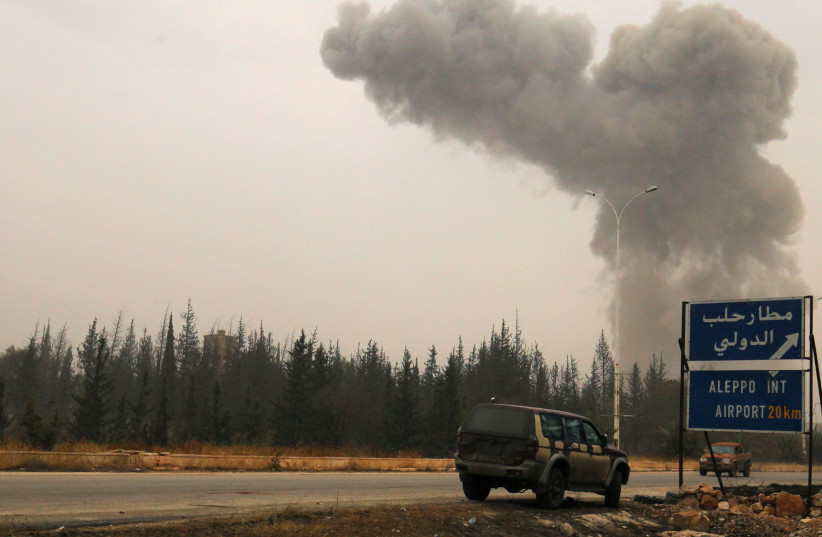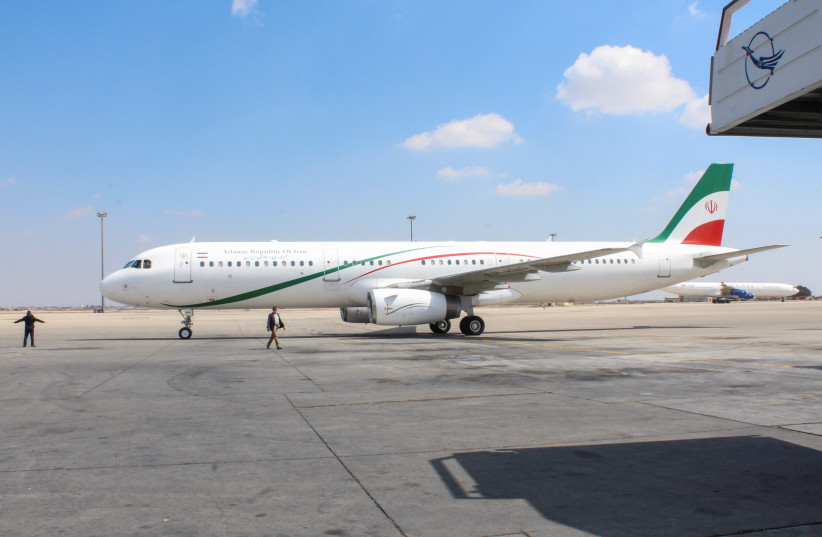Two strikes in a row on the Aleppo airport also illustrate that Syria cannot defend its airspace against the strikes.

Aleppo International Airport was damaged in an airstrike on September 6. Syrian regime media has blamed Israel for airstrikes in Syria over the last month and Iranian media has reported on the airstrikes.
According to satellite images from ImageSat International, the runway of the airport appears out of service. The report notes that according to media reports the “airport is used by Iran to transport weapons to Hezbollah….ISI assessment: The attack was aimed to get the runway and the airport out of service.”
The incident at the airport follows another airstrike in the same area. On September 2, The Jerusalem Post reported that the runway at Aleppo’s International Airport has been repaired and likely returned to service, just days after it was targeted in an alleged Israeli airstrike, according to an assessment by Israeli intelligence firm ImageSat International (ISI). Syria had accused Israel of that airstrike. The VOR (radio navigation system) south of the runway was also damaged in the strike. The system is used to help aircraft stay on course as they approach for landing.
Back in June, Damascus International Airport was also damaged in an airstrike. Al-Jazeera noted at the time that “Syria state media has confirmed that Damascus International Airport has suffered major damage – including to runways – following an Israeli missile attack. The Syrian transport ministry said in a statement on Saturday that runways remained out of service at the capital’s airport following the attack on Friday, the state-run Syrian Arab News Agency (SANA) report.”
Syrian state media said at the time that “landing and departing flights were suspended today till further notification as a result of the Israeli aggression, since it caused heavy damages to the airstrips in several localities and to the navigation lights in addition to the damages [that] occurred in the airport lobby.” Tel Aviv University’s Institute for National Security Studies wrote about the Damascus airport strike. “INSS Managing Director Maj. Gen. (res.) Tamir Hayman comments on the attack on Damascus International Airport, which foreign sources attribute to Israel,” the report noted.
“On the strategic level, the operational pressure in Syria is intended to halt Iran’s consolidation in Syria, and demonstrate to the Syrian regime the cost of hosting the Iranians….On the operational level – three objectives: Work against strategic arms shipments (missiles and UAVs); prevent the transfer of weapons, money, and precision technology to Hezbollah; work against the infrastructure of Shiite militias, whose purpose is to attack Israel.”

There was also a report in Syrian media that the same evening of the airstrike on Aleppo airport, there were also airstrikes in Damascus. The incidents in Aleppo and Damascus this month, as well as back in June, paint a picture of increasing focus on international airports in Syria. Syria has a number of airports that function, some of them are military and others are both military and civilian. Damascus and Aleppo are important air hubs for Syria. Other airports include the T-4 base where Iran has tried to move air defense systems and where Iran once based drones; as well as the Mezzeh Military Airport in Damascus; the Hmeimim base used by Russia in Latakia; the Shayrat Airbase that the US targeted in 2017. The T-4 base was targeted by airstrikes in October 2021 and January 2020 and April 2018. In May 2018 reports said that the “Glass House” used by Iran’s IRGC was targeted near Damascus Airport and it was against targeted in November 2019.
What can be concluded from the number of airstrikes reported on airports in Syria. There appears to be a shift from targeting of military airports to the larger International Airports. This may be due to Iran using these airports as cover for moving weapons to Syria and onward to Hezbollah. Iran wants to exploit these airports, which serve both civilian and military affairs. Syria’s regime needs these airports because the regime is facing economic difficulties and is trying to emerge into normality after years of civil war.
Syria can’t defend its own airspace
The regime can’t have normality if it can’t enable two of its major airports to function. Two strikes in a row on the Aleppo airport also illustrate that Syria cannot defend its airspace against the strikes and appear to send a message to the regime to stop letting Iran use these airports. It shows a level of impunity to operate in Syria and interdict the airports.
However, the regime also repairs the airstrips quickly. This means that the strikes can also be seen as a kind of “whack-a-mole,” meaning that the strikes continue but the regime keeps patching things up and moving on. Iran also doesn’t pay a major price because it can simply wait and fly its munitions to another site. The question is if the price is being raised for the Syrian regime and its partners in Russia and Iran and whether this may encourage Iran to shift tactics and strategy.
As reported by The Jerusalem Post
